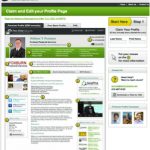I am operating out of our Vermont Office – which is really a home office looking out over the mountains of northern Vermont including Mt. Mansfield and the surrounding hills a few miles from the pristine Caspian Lake in Greensboro.
Today’s highlight includes the installation of a solar energy system to generate sustainable energy for our home. In keeping with this blog’s focus on sales and marketing, I thought it would be interesting to reflect on the sales and marketing process that I experienced with the team from SolarTech in Vermont.
So, what was the marketing and sales cycle? Actually it was very typical of a “considered sale”.
The cost (before incentives) of the Solar Trackers are over $50k – clearly an investment that requires consideration. Incentives bring this down nicely and the payback is reasonable considering the local cost of energy. So, this was a very substantial investment and a classic “considered sale” – where content and the web plays a role along with an active sales process.
1) My first step was research. Of course I spoke with my social network – others in the area that had experience. After learning that I wanted a tracker to maximize power, I went to the web to search for trackers in Vermont and quickly found All Earth Renewables. They did great work on SEO – on the first page of my organic search results. Their web presence includes Facebook and Twitter.
2) I posted to the AllSun product on Facebook – seeking to learn more from my network about options for solar power and researched forums to see whether there were any comments. I later ended up connecting with an experienced solar expert who looked over the proposal and the technology solution.
3) I wanted to discuss a solution, so I filled out a form on the web site seeking contact with a sales representative. The conversion form online was clean and simple. I had an introductory email within hours.
4) I was introduced to a channel partner, SolarTech, who managed the sales cycle. Rich Nicol engaged professionally in all aspects of the sale from feasibility to economic ROI. He handled all the objections and concerns and mapped out a solution tailored to our needs – a classic professional sales process.
In order to get this sale, All Earth Renewables and SolarTech needed an integrated sales and marketing process.
- Web visibility – organic search and social media
- Channel Management – with an effective channel website including testimonial
- Quality value proposition and product
- Accessibility in a clean, professional website
- Knowledgable and professional sales approach
- ROI and product content
- Professional service delivery leading to references and validation.



